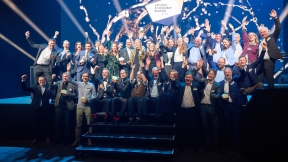The term ‘linked open data’ refers to all data sets that are available without restriction for free use, distribution and further application in the interests of society. They are connected to each other through the World Wide Web. They are set up with coding and linking standards so that machines can interpret LOD correctly in terms of meaning.
Making archive data usable
A new method from the University of Applied Sciences of the Grisons allows archive data to be converted into linked open data. This opens up opportunities for using research data in new contexts.
The goal: making existing, freely usable research data locatable and usable for secondary research. Metadata is greatly important here. The key is that it has to be coded and linked according to a machine-interpretable system. In this case we refer to ‘linked open data’ (LOD). When existing metadata can be easily and systematically converted into LOD, it has great benefits for science.

In the latest Switch Innovation Lab, the University of Applied Sciences of the Grisons used a new method to convert metadata from the Bibliothèque Cantonale et Universitaire Lausanne BCUL’s Patrinum archive into LOD. The method can be transferred to any archive almost automatically.
Link archives together
"This Switch Innovation Lab helps to better link Open Data in libraries and archives. That's crucial for future research," explains Tobias Wildi, lecturer at the University of Applied Sciences of the Grisons and Project Manager of the Innovation Lab. Using standardised coding and linking methods allows data inventory from archives to be linked together. This is a cost-effective and efficient means of reusing valuable research databases to gain new knowledge.
Making research data usable with Innovation Labs
Switch Innovation Labs represent different forms of agile collaboration. Specialists from the Swiss education, research and innovation community work with Switch in a test environment, exploring innovative methods that gradually bring them closer to the vision of a research data connectome.
Innovation






